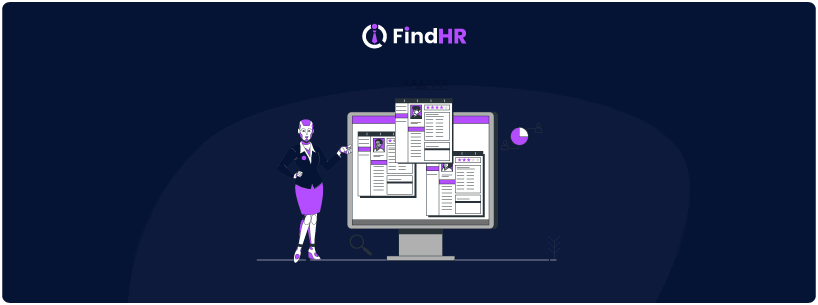
Sorting through hundreds of resumes, screening candidates, and trying to spot the right fit takes time you don’t always have. And when speed is the priority, it’s easy to miss out on great talent or make choices that don’t stick. That’s where AI in recruitment steps in.
A recent Gallup survey found that 93% of Fortune 500 chief human resource officers (CHROs) are already using AI tools to improve how they hire. From cutting down screening time to reducing bias and helping you connect with the best candidates faster, AI is changing the game in recruitment.
Explore how AI makes hiring easier, fairer, and more efficient, and why it’s quickly becoming a must-have for modern recruitment teams.
- What Is AI for Recruiting?
- What Are the Benefits of Using AI in Recruitment?
- How Does AI Change the Recruitment Process?
- What Are the Top AI Tools for Recruitment?
- What Are the Challenges of Applying AI in Recruiting?
- What To Look for in an Automated Payroll System
- How To Integrate AI Into Your Recruitment Process
- Examples of Successful AI Implementation in Recruitment
- Find the Best AI Tools for Recruitment With FindHR
- AI in Recruitment FAQs
AI for recruiting is about using smart technology to make the hiring process faster, fairer, and more effective. Instead of manually sifting through endless applications, recruitment software helps recruiters source candidates, filter resumes, score applicants, and even schedule interviews.
The market realities are driving this shift. High-volume hiring is at an all-time high:
- Goldman Sachs received over 315,000 internship applications in 2024.
- Google saw more than 3 million applications the same year.
- McKinsey crossed the 1 million mark.
- Between 2014 and 2022, the Indian government processed a staggering 220. 5 million job applications.
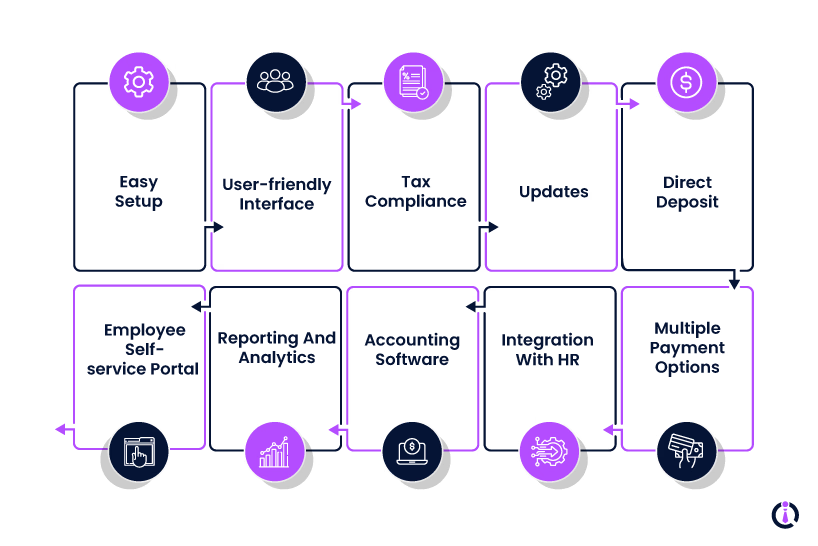
AI isn’t here to replace recruiters; it’s here to make their work easier and more impactful. Recruitment automation software helps automate repetitive tasks and brings data-driven insights into the process. They help teams hire smarter, not harder. Let’s look at some of the key benefits.
Automating Resume Screening and Keyword Matching
AI tools can scan thousands of resumes in minutes, identifying skills, experience, and keywords that match job requirements. This saves you hours of manual work and ensures no promising candidate slips through the cracks. And there are technical skills screening software in the market that you can use to screen for tech positions, if needed.
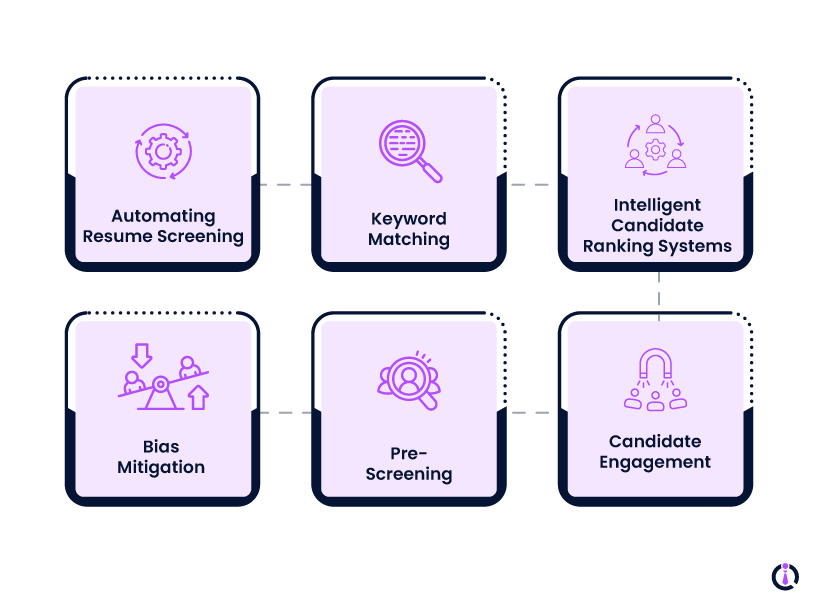
Intelligent Candidate-Ranking Systems
Beyond just keyword matches, AI uses algorithms to score and rank candidates based on skills, career history, and even the likelihood of success in the role. You get a shortlist of the best matches, which makes the decision-making process faster and more accurate.
Initial Candidate Engagement and Pre-Screening
Employee engagement software can handle the first round of candidate conversations — answering questions, collecting basic information, and even running simple assessments. This keeps candidates engaged while freeing you up to focus on deeper interactions.
Bias Mitigation Through Data-Driven Evaluation
One of the most promising aspects of AI in recruitment is its ability to reduce bias. By focusing on skills, experience, and performance data rather than personal details, AI can help create a fairer, more inclusive hiring process.
Without AI, hiring is often slow, repetitive, and full of manual effort. With AI, you can move faster, focus on people instead of paperwork, and make more confident decisions.
Here’s what the difference looks like:
Aspect | Without AI | With AI |
| Resume screening | Manual, time-consuming, prone to error | Automated, fast, accurate |
| Candidate ranking | Based on gut feeling or rushed evaluation | Data-driven, skill-based, reliable |
| Handling volume | Overwhelming, many applicants overlooked | Scalable, thousands screened in minutes |
| Bias | Higher risk of unconscious bias | Reduced through objective algorithms |
| Candidate experience | Slow responses, poor communication | Instant updates, chatbot-driven engagement |
Why Traditional Tools Aren’t Enough
Manual screening alone simply can’t keep up with the kind of volume recruiters deal with today. That’s why recruiting management systems (RMS) and applicant tracking systems (ATS) have become the backbone of modern hiring. More than 90% of employers already use their RMS to filter or rank candidates — 94% for middle-skill roles and 92% for high-skill positions.
Without AI tools:
- You spend hours manually reviewing resumes
- Candidate shortlists depend heavily on human judgment and speed
- Screening large volumes of applications is overwhelming, leading to missed talent
- Bias — conscious or unconscious — can slip into the process
- Candidates often face delays in communication, making the experience frustrating
With talent management software powered by AI:
- Resumes are scanned and matched to roles in minutes
- Candidate ranking is data-driven, highlighting the best matches first
- High-volume hiring becomes manageable, even for thousands of applications
- Algorithms focus on skills and experience, helping reduce bias
- Chatbots and automation keep candidates engaged and informed throughout
With so many applications flooding in, you need more than just good instincts — you need smart technology to keep up. That’s where AI-powered recruitment tools can help. From automating resume screening to improving candidate engagement, these tools help you work faster and smarter. Below are five of the best AI recruitment tools to consider.
1. Manatal
Best for: All-in-one recruitment pipeline management
Manatal is an AI-driven recruitment platform that helps you manage every step of the hiring process. It works like workforce management software , letting you source candidates, track applicants, and even enrich resumes with data from social profiles. It’s especially helpful for small and medium businesses that want enterprise-grade recruitment tech without the complexity.
Key features:
- AI-powered candidate recommendations
- Automated resume enrichment, including LinkedIn and GitHub
- Pipeline tracking with drag-and-drop boards
- Custom career page builder
- Cloud-based, mobile-friendly interface
Pros and cons:
Pros | Cons |
|
|
2. Workable
Best for: Posting jobs and sourcing candidates
Workable is one of the most popular job board software platforms. It connects you to a wide talent pool by distributing job ads across hundreds of job sites in a single click. Beyond just posting, its AI-driven candidate sourcing makes it easier to find quality applicants fast.
Key features:
- One-click posting to 200+ job boards
- AI-powered candidate sourcing
- Video interview functionality
- Mobile-friendly hiring pipeline
- Collaboration tools for hiring teams
Pros and cons:
Pros | Cons |
|
|
3. Humanly
Best for: Candidate conversations and engagement
Humanly focuses on AI-powered chat for candidate screening and engagement. Acting almost like recruitment marketing software , it improves the hiring experience by automating conversations, scheduling interviews, and even collecting candidate feedback. That means less back-and-forth and more qualified candidates moving quickly through the funnel.
Key features:
- Conversational AI chatbot for screening
- Automated interview scheduling
- Candidate FAQs answered instantly
- Integration with ATS and HR tools
- Analytics on candidate interactions
Pros and cons:
Pros | Cons |
|
|
4. Wellfound (formerly AngelList Talent)
Best for: Startups and tech hiring
Wellfound is a leading platform for startups to find and attract top talent. With millions of candidates in its network, it doubles as job board software and an AI-matching platform. The tool is especially useful for young companies looking to connect with candidates who want to work in fast-growing, innovative environments.
Key features:
- Access to millions of startup-focused candidates
- AI-powered job-candidate matching
- Employer branding tools for startups
- Integrated chat for direct candidate communication
- Free and premium job posting options
Pros and cons:
Pros | Cons |
|
|
5. Paradox
Best for: Automating high-volume hiring
Paradox is an AI assistant that handles repetitive hiring tasks at scale. It’s designed for companies that need to screen and hire quickly — retail, hospitality, and frontline industries are its sweet spot. Acting like assessment software , it automates screening questions, schedules interviews, and even runs simple skill assessments — all through a chatbot interface.
Key features:
- AI chatbot Olivia for candidate interactions
- Automated screening questions
- Interview scheduling at scale
- Mobile-first experience for candidates
- Integrations with major ATS platforms
Pros and cons:
Pros | Cons |
|
|
What Are the Challenges of Applying AI in Recruiting?
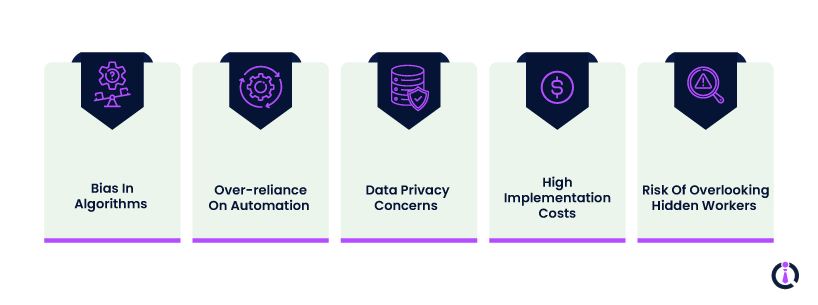
AI in recruiting brings a lot of promise, but it comes with some hurdles, too. While these tools can speed up hiring and improve decision-making, there are real challenges that you need to be aware of. Ignoring them could mean missing out on top talent or even creating new problems in the hiring process.
Here are some of the biggest challenges recruiters face when using AI:
- Bias in algorithms: AI is only as fair as the data it learns from. If past hiring data is biased, the system may continue those patterns.
- Over-reliance on automation: While AI is great for speed, too much automation can strip the human touch out of recruiting.
- Data privacy concerns: Storing and analyzing sensitive candidate data raises compliance and security issues.
- High implementation costs: Advanced AI tools can be expensive, making them harder for smaller businesses to adopt.
- Risk of overlooking hidden workers: In the U. S. alone, there are an estimated 27 million hidden workers — qualified candidates who get filtered out because they don’t neatly fit into predefined boxes.
The best way to overcome these challenges is to treat AI as a partner, not a replacement. Use it to handle the repetitive tasks, but keep human judgment and empathy at the center of your recruitment process.
What To Look for in an Automated Payroll System
A single mistake in payroll can frustrate employees, cause compliance headaches, and waste hours fixing errors. Automated payroll systems cut down on manual work, reduce errors, and keep everything running smoothly. But with so many options out there, how do you know which tool is the right fit?
Here are the key features to look for in an automated payroll system:
- Easy setup and user-friendly interface: Payroll shouldn’t feel like rocket science. A good system is simple to set up and easy to navigate, even for someone without an accounting background.
- Tax compliance and updates: Rules and regulations change all the time. Look for a tool that automatically updates tax rates and helps you stay compliant without extra effort.
- Direct deposit and multiple payment options: Employees expect to be paid on time, every time. The best payroll tools include a compensation management system and offer direct deposit, multiple pay schedules, and even options like prepaid cards.
- Integration with HR and accounting software: Payroll doesn’t stand alone — it connects to attendance, benefits, and accounting. Choosing a system that integrates with your other tools saves time and reduces errors.
- Reporting and analytics: Good payroll software should do more than just pay people. It should give you clear reports on labor costs, overtime, and tax summaries so you can make smarter decisions.
- Employee self-service portal: Employees appreciate being able to download payslips, update details, or check leave balances without waiting on HR. A self-service portal keeps everyone happy and saves your team time.
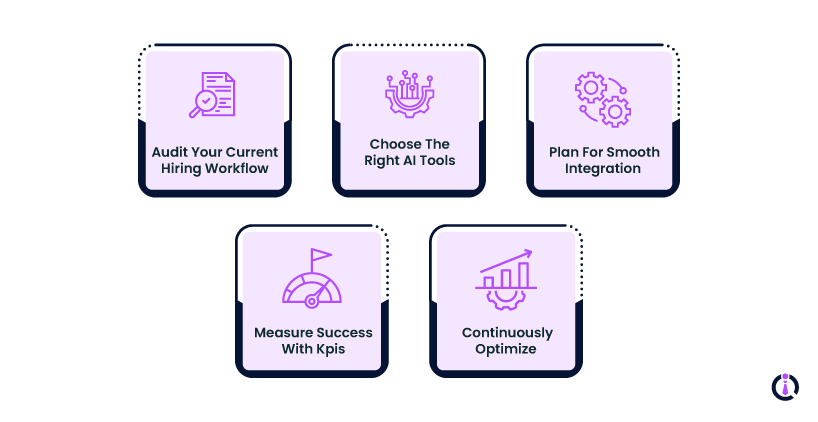
Adding AI to your recruitment process is about making smart changes that complement your team. Done right, AI can save time, improve candidate matching, and help you hire more efficiently.
Here’s a step-by-step guide to integrating AI into your hiring workflow:
- Audit your current hiring workflow: Take a close look at how your recruitment process works today. Identify time-consuming tasks, bottlenecks, and areas where human bias might creep in. This audit gives you a clear picture of where AI can have the most impact.
- Choose the right AI tools: Not every tool fits every team. Consider your hiring volume, the size of your team, and the types of roles you hire for. From resume screening to chatbots and background check software , pick the solutions that solve your biggest pain points.
- Plan for smooth integration: Check that your new AI tools are compatible with your existing ATS or RMS. Train your team on how to use the tools effectively and ensure your AI solutions comply with labor laws and data privacy regulations.
- Measure success with KPIs: Set measurable goals before launching AI. Track metrics like time-to-hire, candidate engagement, quality of hire, and cost-per-hire. Compare results before and after implementation to see the real impact.
- Continuously optimize: AI isn’t set-and-forget. Monitor performance, gather feedback from your team, and adjust parameters to improve outcomes over time.
Many companies are already seeing real results by using AI to streamline hiring, improve candidate experience, and reduce bias. Here are three brands that have successfully integrated AI into their recruitment process.
1. Unilever
Unilever uses AI-powered video interviews and assessment tools to screen candidates for entry-level roles. The system evaluates answers and facial expressions to match applicants to job requirements, cutting hiring time and improving quality-of-hire.
2. L’Oréal
L’Oréal leverages AI for candidate screening and chat-based engagement. AI tools help answer candidate questions, pre-screen applications, and schedule interviews, which allows recruiters to focus on high-value tasks and ensures a smooth candidate experience.
3. IBM
IBM uses AI to scan resumes and recommend top candidates for technical roles. The platform also helps reduce bias by focusing on skills and experience, rather than demographic information, making the hiring process fairer and more efficient.
Choosing the right AI tools for your hiring process doesn’t have to be overwhelming. FindHR helps HR teams, recruiters, and startups discover solutions that match their hiring volume, team size, and workflow needs.
From resume screening and candidate ranking to chatbots and background check software, FindHR connects you with the tools that make recruitment faster, fairer, and more efficient. Talk to our experts and start transforming the way you hire today.
AI in recruitment raises plenty of questions, especially around cost, compliance, and candidate experience. Here are answers to the most common queries HR teams have.
How Will AI Change the Role of the Recruiter?
AI won’t replace recruiters; it will make their work smarter and faster. By automating repetitive tasks like resume screening, candidate ranking, and scheduling, recruiters can focus on higher-value activities such as building relationships and making strategic hiring decisions.
Is AI in Recruitment Legally Compliant With Data Privacy Laws Like GDPR?
Yes, as long as organizations choose compliant tools and follow data protection guidelines. Most reputable AI platforms have built-in safeguards for GDPR, CCPA, and other privacy regulations. It’s important to ensure candidate data is stored securely and used only for the hiring process.
How Much Does It Cost To Implement AI in Recruitment?
Costs vary depending on the tool, features, and company size. Some AI solutions offer scalable pricing based on the number of users or job postings. While enterprise-level platforms can be pricey, smaller businesses often have affordable, subscription-based options.
Can Small Businesses or Startups Afford AI Recruitment Tools?
Absolutely, many AI recruitment tools are designed for startups and SMBs. Even a modestly sized team can benefit from automated resume screening, chatbots, and candidate ranking without breaking the budget.
How Do Candidates Feel About Being Evaluated by AI?
Candidate reactions are mixed. Many appreciate faster feedback and streamlined processes, while some feel uneasy about being judged by algorithms. Clear communication about how AI is used can improve candidate trust and acceptance.
What Are the Risks or Limitations of Using AI in Recruitment?
AI can perpetuate bias if trained on biased data, overlook hidden talent, or become too rigid with filters. Over-reliance on automation may reduce the human touch. To mitigate risks, combine AI insights with recruiter judgment and continually monitor performance.